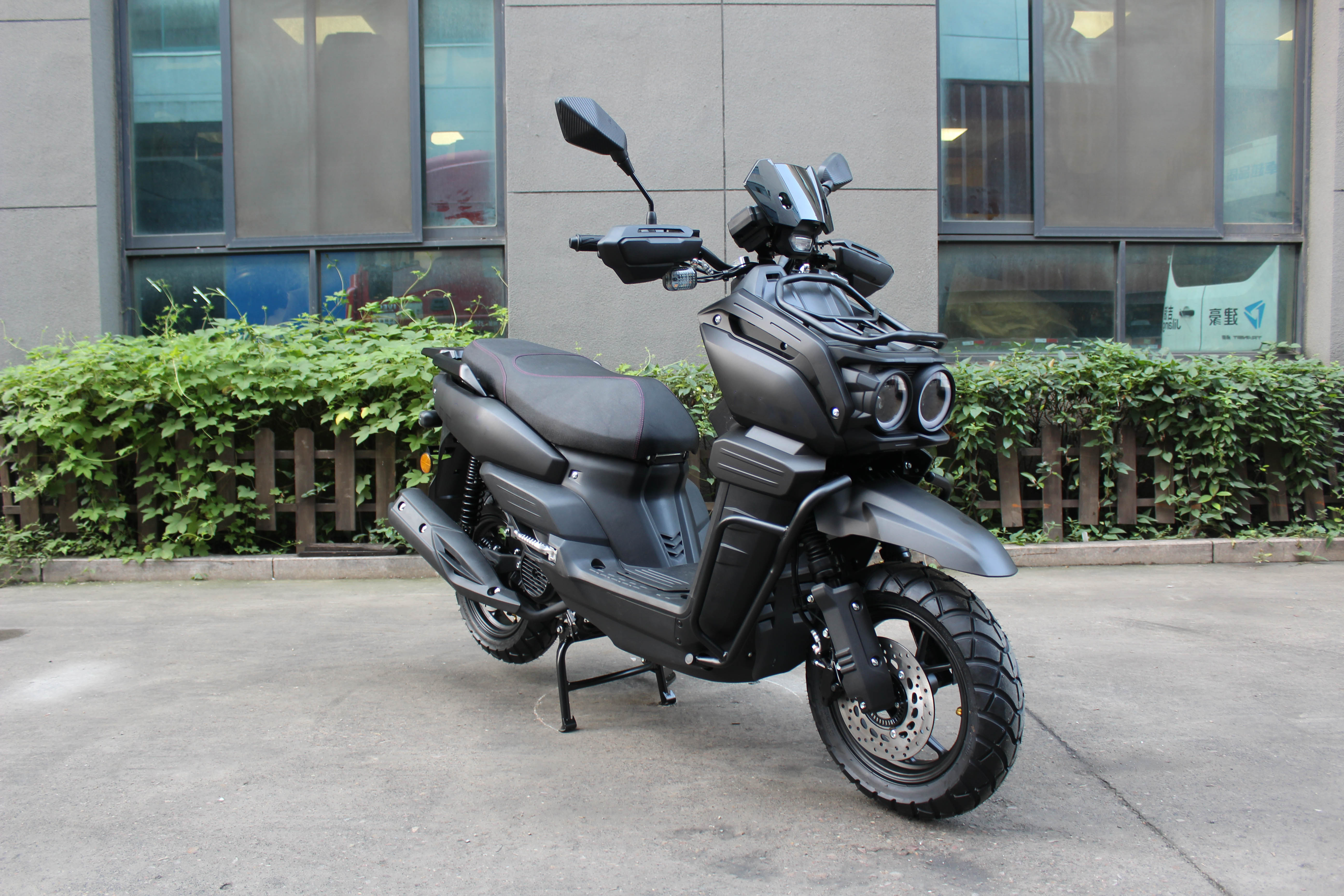- This topic is empty.
-
AuthorPosts
-
2025-11-17 at 1:57 pm #86748
Riding an off-road motorcycle is an exhilarating experience, offering freedom, adventure, and the thrill of exploring rugged trails. However, off-road riding also carries inherent risks. Unlike paved roads, trails, dirt tracks, and forest paths are unpredictable, with uneven terrain, loose surfaces, and obstacles that can lead to accidents. Prioritizing safety is essential for both beginners and experienced riders. From protective gear to smart riding techniques, this guide will help you ride safely while enjoying the off-road experience.
1. The Importance of Safety in Off-Road Riding
Off-road motorcycles are designed for adventure, but the freedom they provide comes with risks. Injury statistics show that common accidents include falls, collisions with obstacles, and mechanical failures. Many of these incidents can be prevented by proper safety practices, appropriate gear, and skillful riding.
Investing in safety is not just about avoiding injury—it also ensures a more enjoyable and confident riding experience. By following safety protocols, riders can push their limits without compromising well-being.
2. Essential Off-Road Motorcycle Gear
Proper gear is the foundation of off-road safety. Each piece serves a specific purpose, protecting you from injuries caused by falls, debris, and environmental hazards.
a. Helmet
The helmet is the most important piece of protective gear. It protects your head from serious injuries and should always be DOT or ECE certified. Off-road helmets typically feature:
-
Extended chin protection for downhill trails
-
Visor to shield against sun and debris
-
Ventilation systems for comfort during long rides
A well-fitted helmet is crucial—too loose or too tight can reduce protection and cause discomfort.
b. Goggles
Goggles protect your eyes from dust, dirt, mud, and flying debris. Clear or tinted lenses can enhance vision in different lighting conditions. Look for goggles with:
-
Anti-fog coatings
-
UV protection
-
Adjustable straps for a snug fit
c. Gloves
Gloves protect your hands from abrasions, blisters, and impacts. Off-road gloves are designed with:
-
Reinforced palms and knuckles
-
Breathable materials for ventilation
-
Grip-enhancing surfaces for better control
d. Boots
Off-road boots provide ankle support, impact protection, and grip. Key features include:
-
Reinforced toes and heels
-
High shaft for ankle stability
-
Heat-resistant soles for engine contact
Proper boots prevent sprains, fractures, and burns, which are common in off-road accidents.
e. Protective Clothing
-
Jerseys and Pants: Durable, flexible fabrics that resist tears
-
Chest Protectors: Shield ribs, collarbones, and vital organs
-
Knee and Elbow Guards: Prevent joint injuries during falls
-
Neck Brace: Reduces risk of neck injuries on high-impact trails
Investing in high-quality protective gear is non-negotiable for serious off-road riders.

3. Pre-Ride Safety Checks
Before every ride, a comprehensive pre-ride inspection can prevent mechanical failures:
-
Tires and Wheels: Check for wear, proper pressure, and loose spokes
-
Brakes: Ensure they are responsive and pads are in good condition
-
Suspension: Inspect for leaks or damage
-
Chain and Sprockets: Lubricate and adjust tension
-
Throttle and Clutch: Confirm smooth operation
-
Fuel and Oil Levels: Prevent breakdowns in remote areas
A few minutes of inspection can prevent accidents caused by mechanical failure.
4. Riding Tips for Safety
Beyond gear, proper riding techniques significantly reduce the risk of injury.
a. Start Slow and Build Skills
Beginners should start on easy trails, gradually advancing to more technical terrain. Focus on:
-
Balance and posture
-
Controlled acceleration and braking
-
Maneuvering around obstacles
Rushing into advanced trails without practice increases accident risk.
b. Maintain Proper Riding Posture
Correct posture improves stability and control:
-
Standing Position: Bend knees, stand on foot pegs on rough terrain
-
Seated Position: Keep elbows up, lean forward on climbs
-
Weight Distribution: Adjust body weight for traction and balance
Posture is crucial on uneven surfaces, steep inclines, and during jumps.
c. Master Braking Techniques
Off-road trails require a different braking approach than street riding:
-
Use both front and rear brakes smoothly
-
Avoid sudden hard braking to prevent skidding
-
Adjust braking based on surface type: loose dirt, mud, or gravel
d. Look Ahead
Focus on the trail several feet ahead, not directly in front of the wheel. Anticipating obstacles allows smoother maneuvering and faster reactions.
e. Ride Within Your Limits
Understanding your skill level and bike capabilities is vital. Pushing too hard can result in accidents. Progress gradually, and know when to walk difficult sections.
f. Use Hand Signals and Ride in Groups
If riding with others:
-
Communicate obstacles and hazards
-
Maintain safe spacing
-
Avoid sudden lane changes or stops
Group rides enhance safety but require coordination and awareness.
5. Environmental Awareness
Off-road riding often takes place in natural environments. Safety also involves respecting surroundings:
-
Avoid trails after heavy rain to prevent mud slides
-
Watch for wildlife and other riders
-
Stay on designated trails to reduce erosion and environmental damage
Being aware of the environment reduces accidents and ensures sustainable trail use.
6. Emergency Preparedness
Accidents can happen despite precautions. Prepare for emergencies:
-
Carry a first aid kit
-
Keep a mobile phone or GPS device for emergencies
-
Inform someone of your riding route and expected return time
-
Learn basic trail-side repair skills
Preparedness reduces risk and ensures faster response in case of injuries or mechanical failures.
7. Advanced Safety Tips
Experienced riders should consider additional safety measures:
-
Riding in pairs: Having a partner increases safety in remote areas
-
Hydration packs: Prevent fatigue and dehydration
-
Trail mapping: Familiarize yourself with trail difficulty and escape routes
-
Weather monitoring: Avoid extreme weather conditions that increase trail risk
Advanced planning and situational awareness are essential for safe off-road adventures.
8. Common Off-Road Motorcycle Injuries and Prevention
Understanding common injuries helps in prevention:
-
Fractures and Sprains: Mostly from falls—prevented by boots, knee braces, and controlled riding
-
Head Injuries: Helmets are crucial for protection
-
Cuts and Abrasions: Gloves, jackets, and pants provide protection
-
Heat Exhaustion: Stay hydrated and wear ventilated clothing
Protective gear and responsible riding habits significantly reduce injury risk.
9. Conclusion
Off-road motorcycling is thrilling, challenging, and rewarding—but it requires a serious commitment to safety. Wearing proper gear, performing pre-ride checks, practicing correct riding techniques, and maintaining environmental awareness are essential steps every rider must follow.
Safety is not just about avoiding injuries; it is about enjoying the ride with confidence. Whether you are a beginner or an experienced rider, investing in your safety ensures that every trail ride is memorable for the right reasons.
By combining high-quality protective gear, smart riding habits, and preparation for emergencies, off-road motorcycle enthusiasts can experience the ultimate adventure while minimizing risks. Remember, safety is not optional—it is the foundation of every great off-road ride
As a professional off-road motorcycle manufacturer, Jilang Motorcycle is committed to providing riding enthusiasts worldwide with high-performance, durable, and safe motorcycles. Jilang Motorcycle emphasizes incorporating advanced safety concepts and technological innovations into its design and production, ensuring that every off-road motorcycle not only possesses superior power and handling but also provides riders with comprehensive protection and support.http://www.jilangmotor.com
jilangmotor -
-
AuthorPosts
- You must be logged in to reply to this topic.


